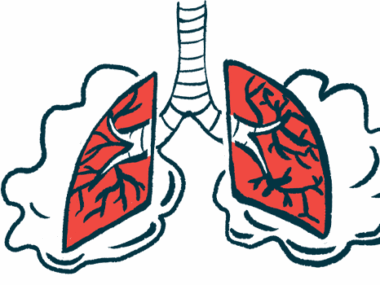Woman had rare thyroid sarcoidosis that regressed spontaneously
Ultrasounds used to identify and monitor patient's granuloma: Case report
Written by |

A 37-year-old woman in Japan developed a granuloma — the clumps of cells that characterize sarcoidosis — in her thyroid gland that spontaneously regressed without steroid treatment, a case study reports.
The woman also showed lesions in the skin and salivary gland, suggesting “thyroid sarcoidosis should be considered in a case with [whole-body] sarcoidosis,” researchers wrote in the report “Multiple ultrasound examination detected spontaneous regression of thyroid sarcoidosis: A case report,” which was published in the journal Thyroid Science.
Sarcoidosis is characterized by the abnormal formation of granulomas in various organs and tissues, most commonly the lungs and lymph nodes. Granulomas in the thyroid, a small butterfly-shaped gland, are rarely reported. The thyroid gland produces hormones that regulate the body’s metabolic rate, growth, and development.
In this report, clinicians at Shimane University Hospital, in Shimane, Japan, described the case of a woman with thyroid sarcoidosis.
Patient experienced blurred vision, light sensitivity, vision loss
The patient visited an ophthalmic clinic after developing blurred vision, sensitivity to light, and ultimately vision loss. She was diagnosed with uveitis, a form of eye inflammation, but was referred to the ophthalmology department of the hospital because doctors suspected she may also have sarcoidosis and tuberculosis.
Her medical history did not reveal any noteworthy issues, and her vital signs were stable. A CT scan revealed a mass in the right lobe of the thyroid gland. Blood work showed an imbalance in certain thyroid-produced hormones — elevated levels of free thyroxine and low levels of the thyroid stimulating hormone — indicating thyroiditis, or inflammation of the thyroid.
Thyroglobulin, a protein made by the thyroid gland, was elevated, and the patient was positive for thyroid peroxidase antibodies, an indicator of autoimmune thyroid disorders. The activity of the angiotensin-converting enzyme — a common sarcoidosis biomarker — was slightly elevated, along with the soluble interleukin 2 receptor, also a marker of sarcoidosis. Tuberculosis was excluded.
An ultrasound of the thyroid gland revealed a mass in the right lobe, which was confirmed to be a granuloma.
We experienced a case with thyroid sarcoidosis and found spontaneous regression of the thyroid lesion by multiple ultrasound examinations.
The patient was subsequently diagnosed with thyroid sarcoidosis. Further examination revealed enlargement in the lymph nodes and granuloma lesions in the skin and salivary glands.
Since the patient had no active sarcoid lesions, she was not initially treated with steroids. Two months later, the patient repeated an ultrasound that showed the thyroid granuloma had spontaneously regressed. Her inflammation was also resolved, with thyroid hormone levels returning back to normal two months later.
She started steroids administered into-the-vein for the treatment of the salivary gland granuloma. The treatment was effective, as three months later, no granuloma was evident by ultrasound.
“We experienced a case with thyroid sarcoidosis and found spontaneous regression of the thyroid lesion by multiple ultrasound examinations,” the researchers concluded.






